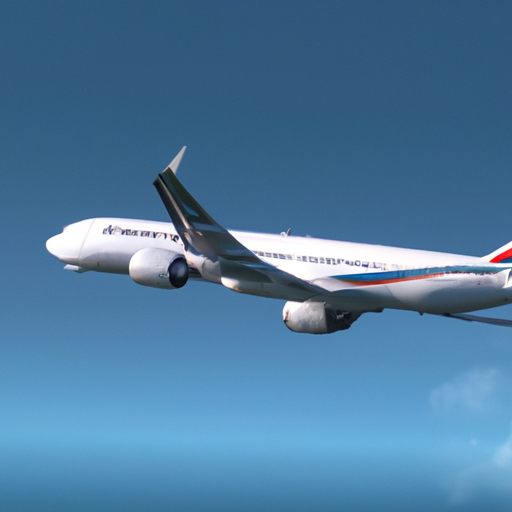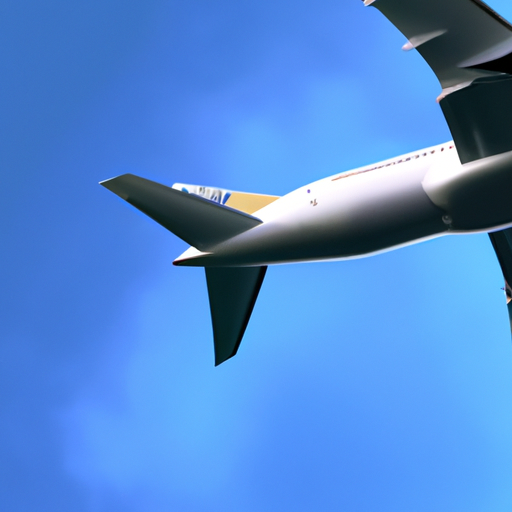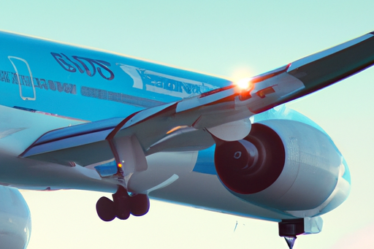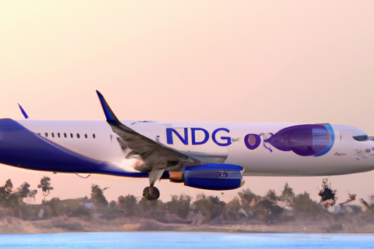
The Growth of Asia Pacific Airlines in Transporting International Passengers
August Sees Asia Pacific Airlines Transporting 25.7 Million International Passengers
In recent years, the Asia Pacific region has experienced a significant growth in the aviation industry. August, in particular, has seen a remarkable increase in the number of international passengers being transported by airlines in this region. According to recent statistics, Asia Pacific airlines transported a staggering 25.7 million international passengers during this month alone.
This growth can be attributed to several factors. Firstly, the Asia Pacific region has become a popular tourist destination for travelers from all around the world. With its rich cultural heritage, breathtaking landscapes, and vibrant cities, it is no wonder that more and more people are choosing to visit this part of the world. As a result, airlines in the region have seen a surge in demand for international flights.
Furthermore, the rise of low-cost carriers has made air travel more accessible to a wider range of people. These budget airlines offer affordable fares, allowing travelers to explore new destinations without breaking the bank. As a result, more people are opting to fly rather than travel by other means of transportation. This has contributed to the increase in international passengers being transported by Asia Pacific airlines.
Another factor that has contributed to the growth of Asia Pacific airlines in transporting international passengers is the improvement in infrastructure. Many countries in the region have invested heavily in expanding and upgrading their airports, making them more efficient and capable of handling larger volumes of passengers. This has not only made air travel more convenient but has also attracted more airlines to operate in the region.
In addition to these factors, the Asia Pacific region has also benefited from the increasing number of bilateral agreements between countries. These agreements have liberalized air travel, allowing airlines to operate more freely between different countries. This has led to an increase in the number of international flights and has made it easier for passengers to travel between destinations in the region.
The growth of Asia Pacific airlines in transporting international passengers has had a positive impact on the region’s economy. The influx of tourists has boosted the tourism industry, creating jobs and generating revenue for local businesses. Additionally, the increased connectivity has facilitated trade and business opportunities, further stimulating economic growth.
Looking ahead, the future looks promising for Asia Pacific airlines. With the region’s continued economic growth and the increasing popularity of air travel, it is expected that the number of international passengers being transported by airlines in this region will continue to rise. This presents both opportunities and challenges for airlines, as they strive to meet the growing demand while maintaining high standards of service and safety.
In conclusion, August has witnessed a significant growth in the number of international passengers being transported by Asia Pacific airlines. This can be attributed to various factors, including the region’s popularity as a tourist destination, the rise of low-cost carriers, improved infrastructure, and bilateral agreements between countries. This growth has had a positive impact on the region’s economy and is expected to continue in the future. As more and more people choose to explore the wonders of the Asia Pacific region, airlines in this part of the world are poised to play a crucial role in facilitating their journeys.
Key Factors Contributing to the Increase in International Passengers in Asia Pacific Airlines

August Sees Asia Pacific Airlines Transporting 25.7 Million International Passengers
Asia Pacific airlines have experienced a significant increase in the number of international passengers being transported in the month of August. This surge can be attributed to several key factors that have contributed to the growth of the aviation industry in the region. In this article, we will explore these factors and understand how they have played a crucial role in the rise of international passengers.
One of the primary factors behind the increase in international passengers is the growing middle class in Asia Pacific countries. As economies in the region continue to flourish, more people are able to afford air travel, leading to a higher demand for flights. This rise in disposable income has allowed individuals to explore new destinations and experience different cultures, resulting in a boost in international travel.
Furthermore, the expansion of low-cost carriers has made air travel more accessible to a wider range of people. These budget airlines offer affordable fares, making it easier for individuals to plan trips and explore new destinations. With the availability of cheaper flights, more people are now able to fulfill their travel aspirations, leading to an increase in international passengers.
Another contributing factor is the rise of tourism in the Asia Pacific region. Countries such as Thailand, Japan, and Singapore have become popular tourist destinations, attracting visitors from all over the world. The unique cultural experiences, breathtaking landscapes, and historical landmarks have made these countries must-visit places for travelers. As a result, airlines in the region have witnessed a surge in international passengers as tourists flock to these destinations.
In addition to tourism, business travel has also played a significant role in the increase of international passengers. Asia Pacific has emerged as a global economic powerhouse, with many multinational companies establishing their presence in the region. This has led to an increase in business travel, as professionals from different countries frequently visit Asia Pacific for meetings, conferences, and other work-related purposes. The need for efficient and convenient air travel has resulted in a higher number of international passengers.
Moreover, the advancement of technology has made it easier for people to book flights and plan their trips. Online travel agencies and airline websites have simplified the process of searching for flights, comparing prices, and making reservations. With just a few clicks, travelers can now book their tickets and plan their itineraries, making air travel more accessible and convenient. This ease of booking has undoubtedly contributed to the increase in international passengers.
Lastly, the efforts of airlines to improve their services and enhance the overall travel experience have also played a crucial role in attracting more international passengers. Airlines have invested in modernizing their fleets, offering in-flight entertainment, and providing comfortable seating options. Additionally, they have focused on improving customer service and ensuring a seamless travel experience for passengers. These efforts have not only increased customer satisfaction but have also encouraged more people to choose air travel for their international journeys.
In conclusion, the increase in international passengers in Asia Pacific airlines can be attributed to several key factors. The growing middle class, the expansion of low-cost carriers, the rise of tourism and business travel, advancements in technology, and the efforts of airlines to enhance the travel experience have all contributed to this surge. As the region continues to develop and prosper, it is expected that the number of international passengers will continue to rise, further boosting the aviation industry in Asia Pacific.
Challenges and Opportunities for Asia Pacific Airlines in the International Passenger Market
August Sees Asia Pacific Airlines Transporting 25.7 Million International Passengers
Asia Pacific airlines have been experiencing both challenges and opportunities in the international passenger market. In August alone, these airlines transported a staggering 25.7 million international passengers. This significant number highlights the region’s growing importance in the global aviation industry.
One of the challenges faced by Asia Pacific airlines is the intense competition in the international passenger market. With numerous airlines vying for passengers, it becomes crucial for these airlines to differentiate themselves and offer unique services. This competition drives innovation and pushes airlines to constantly improve their offerings to attract and retain customers.
Another challenge is the diverse range of cultures and languages in the Asia Pacific region. As airlines cater to passengers from various countries, they must be sensitive to cultural differences and provide services that are inclusive and respectful. This requires airlines to invest in training their staff to be culturally aware and proficient in multiple languages. By doing so, they can enhance the passenger experience and build strong relationships with customers.
Despite these challenges, there are also significant opportunities for Asia Pacific airlines in the international passenger market. The region’s rapid economic growth has led to an increase in disposable income, allowing more people to travel. This growing middle class presents a vast market for airlines to tap into. By offering affordable fares and convenient routes, airlines can attract a larger customer base and expand their market share.
Furthermore, the Asia Pacific region is home to some of the world’s most popular tourist destinations. From the bustling streets of Tokyo to the pristine beaches of Bali, there is no shortage of attractions for international travelers. Airlines can leverage these destinations to their advantage by promoting travel packages and partnering with local tourism boards. This not only benefits the airlines but also boosts the local economy and promotes sustainable tourism.
Another opportunity lies in the rise of low-cost carriers in the Asia Pacific region. These airlines offer affordable fares and have gained popularity among budget-conscious travelers. By adopting a low-cost model, traditional airlines can tap into this market segment and attract a new customer base. This can be achieved by offering competitive fares, streamlining operations, and providing a seamless travel experience.
To capitalize on these opportunities, Asia Pacific airlines must also address certain challenges. One such challenge is the need for infrastructure development. As passenger numbers continue to rise, airports must be equipped to handle the increased traffic. This includes expanding terminal capacity, improving immigration and customs processes, and enhancing baggage handling systems. By investing in infrastructure, airlines can ensure a smooth and efficient travel experience for their passengers.
In conclusion, Asia Pacific airlines face both challenges and opportunities in the international passenger market. While competition and cultural diversity pose challenges, the region’s economic growth, popular tourist destinations, and the rise of low-cost carriers present significant opportunities. By addressing these challenges and capitalizing on the opportunities, Asia Pacific airlines can continue to thrive in the global aviation industry.


